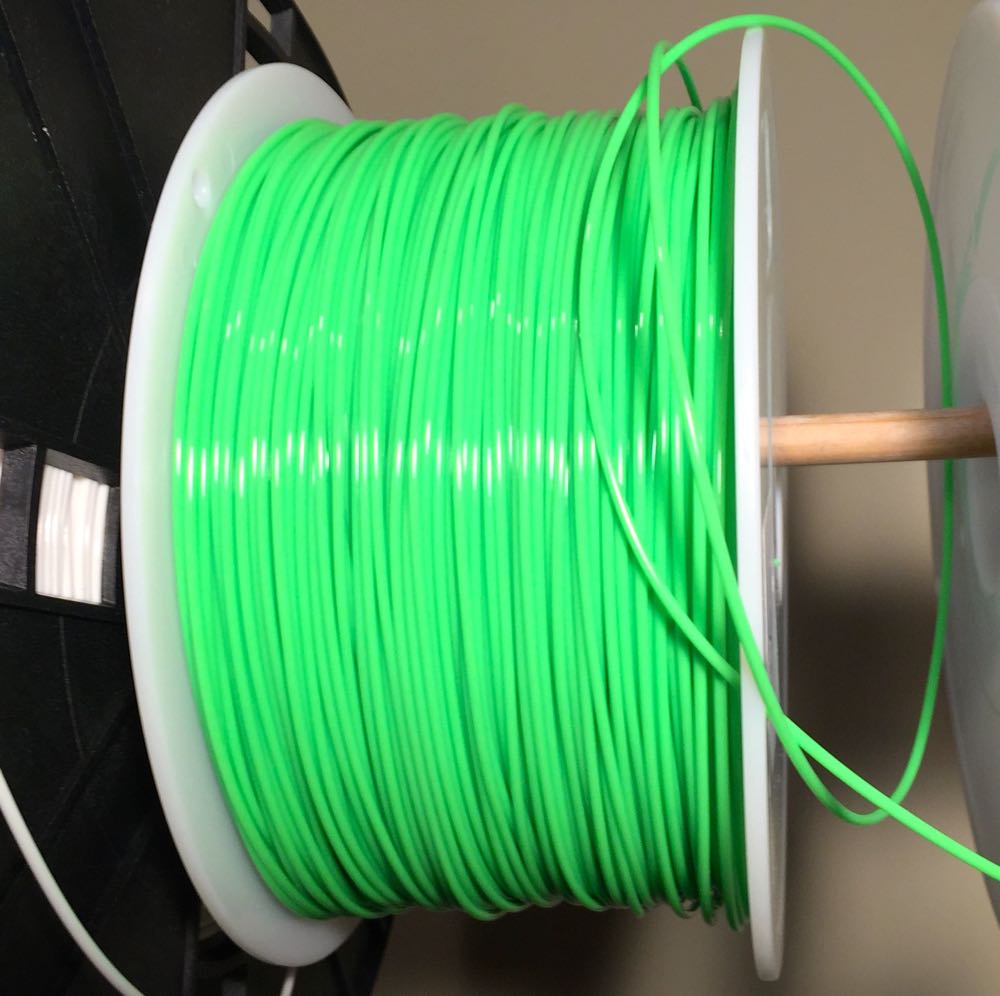For some years now, to market 3D printer filament you merely had to provide good quality filament. That seems to be changing.
In 2012 a decent 3D printer filament vendor would offer a choice of ABS or PLA plastics in either 3.00 or 1.75mm formats. Oh yes, there might be a handful of colors other than black, white and “natural”.
Wind the clock forward to 2015 and we see a different market emerging. While you can still purchase the 2012 set of products, there have been a number of enhancements to the product shelf of many filament vendors:
- Many brilliant colors beyond the basic set, including transparent and glow-in-the-dark
- A variety of wood-infused filaments, with varying colors, woods and degrees of coarseness
- An increasing number of metal-infused filaments, beginning with bronze and now including copper, tungsten, stainless steel and more
- Conductive filaments, enabling those with dual extruders to actually print primitive circuits embedded within printed components
- Flexible filaments capable of printing embedded hinges, flaps or grips on rigid parts
- Ultra-strong carbon fiber filament permits printing significantly stronger parts, opening up many new applications for 3D printing
- Alternative materials such as Nylon, HPDE and even high-temperature ULTEM
There will always be room for the basics, but nowadays it seems that filament vendors could be pushed by the market to offer a lot more than just that.
We discussed whether 3D printer filament has become a commodity earlier, and concluded it had not yet done so. Meanwhile, differentiation in the market continues by many vendors offering a increasing basket of specialty filaments.
Now if only more people would use them.


